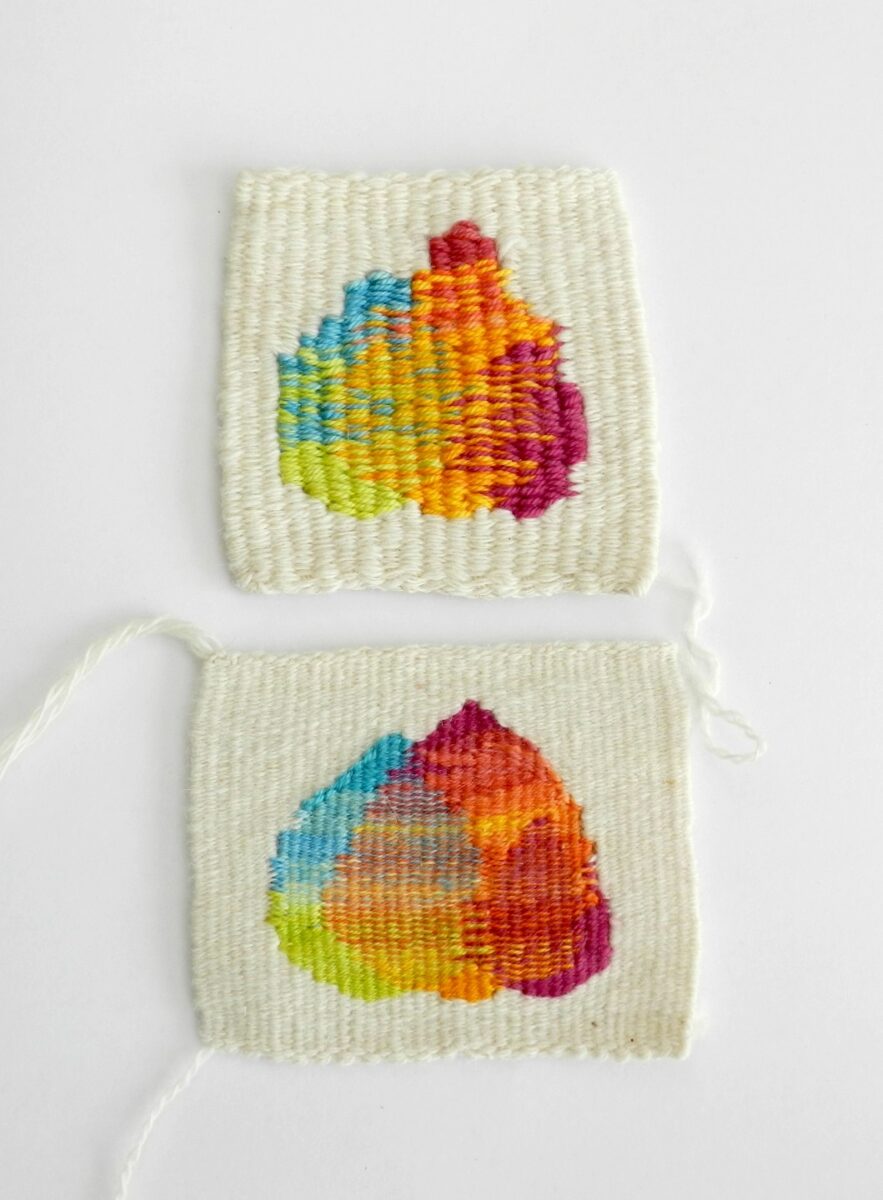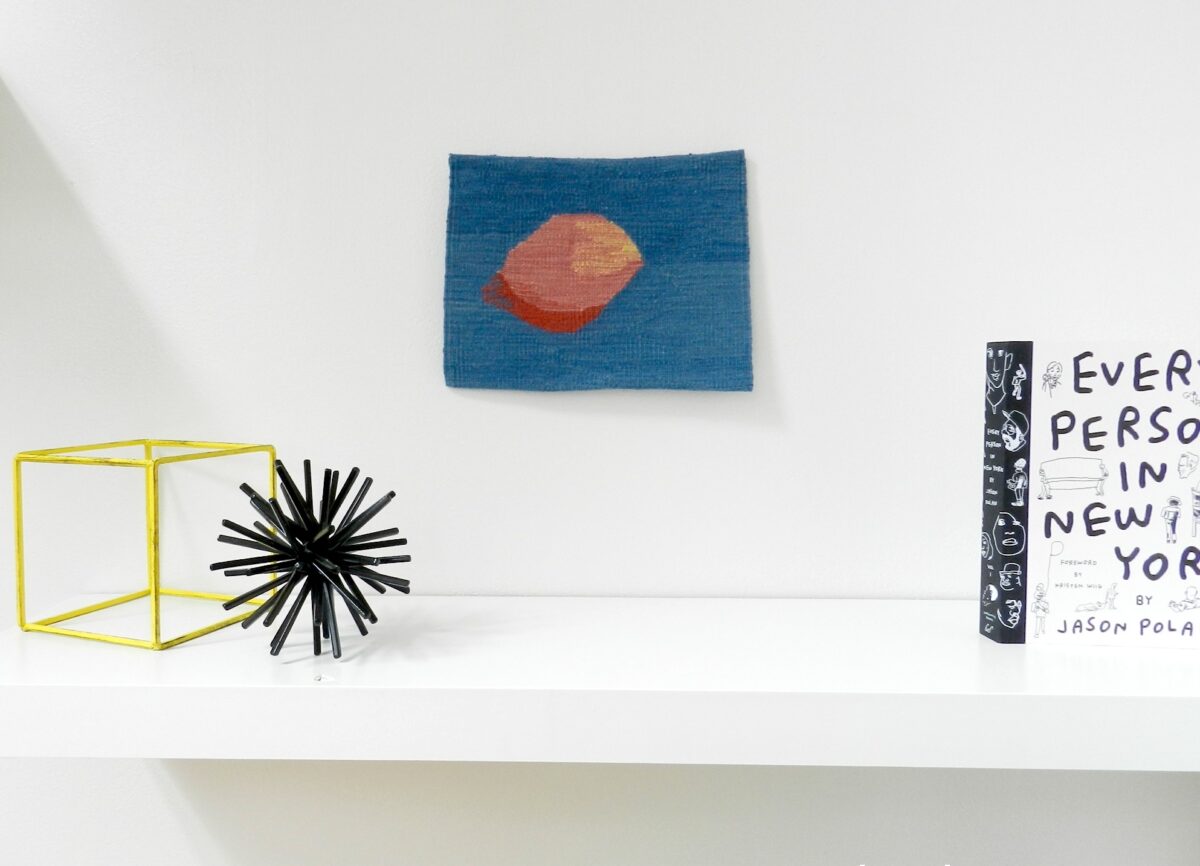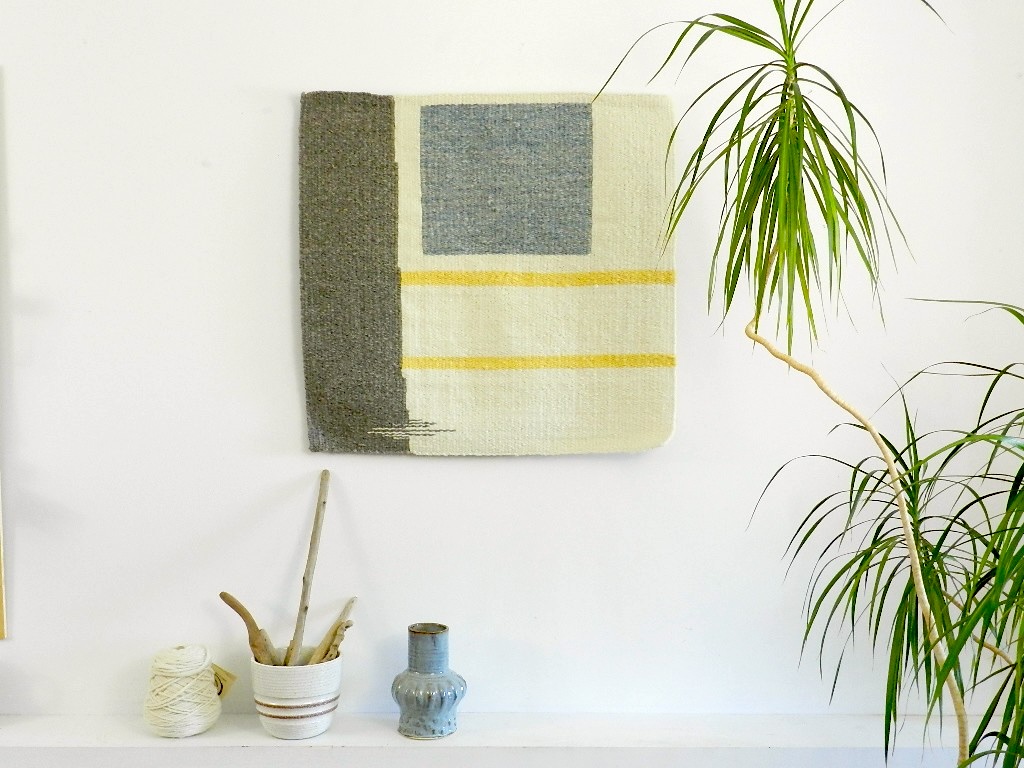How SETT Affects Your Finished Tapestry
Sett refers to the relationship between your warp yarn (the yarn dressing your loom) and your weft yarn (the yarn you weave with). The variables we are looking at are: (1) the gauge of both the warp and weft yarns; (2) our ends-per-inch, i.e., how far apart our warp yarns are on the tapestry loom.
The finer your warp and weft yarns, and the closer together your warps (sett) are, the more detail you can achieve in your tapestry design. The key is to make sure your warps are not so close together that you are unable to maintain weft-faced weaving.
Changing Our Warp Sett

Ends per inch (EPI) measures how many warp threads are in a one-inch horizontal area. The examples above show two extremes to illustrate how much less detail we can achieve when we divide our EPI in half and use two strands of the same weft yarn as opposed to one, comparatively. The above image shows how I have woven the same design twice, one sample with SweetGeorgia Tough Love Sock at 10 EPI (bottom) and another sample using two strands of the same yarn at 5 EPI (top). My ability to create detail diminishes significantly.
Changing Our Weft Thickness

Now, what happens when you change only one of those variables? These tiny two-inch samples above are both woven at 9 EPI, but the sample on the left is woven with Everlea Fingering, a 2-ply fingering weight yarn, and the sample on the right is woven with Everlea Worsted, a 4-ply worsted weight yarn. The sample woven with the finer-weight yarn can achieve far more detail even though the EPI hasn’t changed. Think of weft-faced cloth as being made up of pixels. Each pixel in the finer example was reduced in height by half!
Changing Both Warp & Weft Variables

For a more subtle example, here are two samples which are the same design woven twice. The one on the left is woven in Everlea Fingering at its most dense possible sett, 12 EPI. The one on the right is woven with Everlea Worsted at its densest possible sett, 10 EPI.
We can see that the fingering-weight yarn achieves a far more dainty and detailed version of the design. The two-ply nature of the fingering-weight yarn also lends itself to this, just as with knitting, as anything three-ply or higher creates more defined stitches. Two-ply yarns offer less definition. A two-ply yarn used in tapestry has an effect where each pick of weaving (or line) seems to blend into the next, having a less defined nature than that of a three-ply yarn.
Considerations on Choosing Sett

While the sett you work with is completely a matter of preference, my general rule when weaving small-scale tapestry is to reduce both my yarn gauge and my EPI so my tapestries are detailed and fine, like my Transitions tapestry above, which is 11” wide and woven at a sett of 12 EPI with fingering-weight yarn.

Sampling is always a good idea, but don’t forget to take into consideration the fact that, as you design larger tapestries, your small samples for them will not represent the overall feel of the tapestry, especially when considering weaving with heavy-gauge weft. I find my bulkier weight samples feel cumbersome in design, but when scaled up, they can be quite elegant. When weaving larger-scale tapestry, I’m comfortable weaving at an EPI of as little as 4 EPI with extra bulky weight yarn like my Jefferson Park IV tapestry above, which is 25” square.
The important thing is that you are happy with your design. So, for the best ‘happiness’ results, be sure to follow through with making samples. Your samples are experiments in employing different EPI with the same weft, as well as different weft, using the same EPI. Have fun with it! I look forward to seeing your samples in the School of SweetGeorgia forums!
Resources:
- American Tapestry Alliance Education
- Watch Janna’s Tapestry courses
- Find more of Janna’s articles here!
Original publication: June 2nd, 2021; Refreshed date: October 14th, 2025
The post How SETT Affects Your Finished Tapestry appeared first on SweetGeorgia Yarns.
Comments
Post a Comment